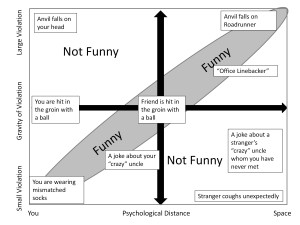Unless you have been hiding in a cave somewhere, you may have noticed that Jean-Claude Van Damme recently made a triumphant return to the world with this epic gem, bringing the Volvo brand along with him:
I have often wondered what ever happened to him since the 90’s when he was kicking the crap out of people in new and innovative ways. Apparently, at least some of that time has been spent trying to recreate the ice-cold refreshment of a Coors light, or doing the splits to motivate small businesses to work harder:
Looking at all of Van Damme’s recent advertising spots, we see that a) Jean-Claude cannot keeps his legs closed, and b) the new Volvo ad’s view count on youtube reached 33 million in 6 days (probably is higher now), while the other Van Damme ads have failed to reach 100 thousand in much longer timeframes. The examination of these ads poses two questions: 1) why bother using celebrity endorsements if one cannot guarantee at least a 50% shot at success (only 1/3 of JCVD endorsed commercials succeeded), and 2) What did Volvo do differently to make their video go viral?
Why Use Celebrity Endorsements?
As I mentioned in an earlier blog post, there are two main reasons to use celebrities to endorse your brand. The first and most obvious reason is brand exposure. Brands will often use popular celebrities because they easily get noticed, and therefore by linking up with the celebrity, the brand can tag along for the popularity ride, thereby increasing both brand awareness and exposure.
What is interesting in Volvo’s case is that JCVD has seemingly been hiding for well over 10 years and hasn’t been talked about until now. So why would they choose someone like JCVD? It all has to do with the second and perhaps more important reason to use celebrity endorsements: the ability to link your brand’s attributes to those of the celebrity.
For as long as I can remember, the Volvo brand has represented all things boring, bland, and safe. One would never mention Volvo in the same breath with Mercedes, Ferrari or Bugatti. The ‘wow’ factor that Volvo has never been associated with was also reflected in their sales, which had been sluggish for a long time. JCVD has also had his share of bumpy roads, and he states that very clearly right at the beginning of the ad. Undeniably, however, is that JCVD has always been in incredible shape (which he also points out in the ad), and Volvo wants you to know that their cars have always been in incredible shape too. You see, in this ad, Volvo is JCVD and JCVD is Volvo, and the amazement of him doing the splits in between two trucks that are reversing is equally matched by the smoothness with which those trucks are reversing and moving! This ad displays a symbiotic relationship between the celebrity and the brand, and by highlighting the attributes that JCVD represents, they are strengthening their association with those exact same attributes. By joining forces and creating this video together, I think it is safe to say that JCVD will be brought back to relevance (even if temporarily) and supply the ‘wow’ that Volvo has always been missing.
By contrast, looking at the Coors light ad and the GoDaddy ad, their use of JCVD was completely wasted. Coors light wanted to promote how refreshing their beer is – an attribute that has nothing to do with JCVD. Coors has JCVD look like he’s been trying to recreate this refreshing feeling since the 90’s, in an effort to explain his absence from pop culture – an ad that could have been recreated by any celebrity that has fallen from stardom – and as a result, does not serve to capitalize on JCVD’s endorsement. Meanwhile GoDaddy had JCVD doing the splits in an effort to motivate small business owners to work harder. I do not understand how JCVD doing the splits serves to accentuate the message of working harder, nor do I understand what this has to do with GoDaddy as a brand!
How to Make a Video Go Viral?
In all three ads, JCVD is the celebrity endorser however only one of the three went viral. Where did Coors and GoDaddy go wrong?
In another earlier blog post, I examined how to make videos funny, and I believe that some of the same rules apply in terms of creating a viral video and that is in displaying a benign violation in order to peak someone’s curiosity. A benign violation needs to be a violation of what is deemed normal while at the same time not being harmful to the viewer.
PSYCHOLOGICAL DISTANCE VS. VIOLATION SEVERITY 
At the same time, each person has their own tolerance level of what is benign and what is a violation and therefore striking the right balance can be tricky. In my opinion, the Coors ad was too benign to be entertaining, while the GoDaddy commercial was in fact too weird along with being too benign. Meanwhile, the Volvo ad hit the sweet spot of being entertaining, as there was a perceived risk that JCVD might fall, while at the same time being something that one has probably never seen before, and having a song (Enya – Only Time) that serves to enhance emotive connectivity. According to the “Arousal Hierarchy” developed by social psychology professor Dr. Rosanna Guadagno, a video that creates the feeling of awe or humour has a higher likelihood of being forwarded. The Volvo ad managed to provide a sense of awe, and while the Coors and GoDaddy ads tried to be funny, they failed. .
Not to be forgotten are the critical roles execution and promotion play in helping a video go viral. I discovered the Volvo video from a marketing blog about a week ago, and then rediscovered it about 6 times that day on various marketing blogs where they all discussed the quality of the ad. It would appear as though Volvo tapped into marketing influencers to help spread the word, and due to the quality of the video it continued to be shared until I saw it on mainstream news outlets a few days later. I would imagine the Coors and GoDaddy videos also went to influential bloggers to help spread the word. But because of inferior ad quality, those videos failed to gain momentum. Tapping into influencers can be key to making a video go viral, if the content is there to back up the hype.
Content is king. The informative nature of the Volvo ad, coupled with superior emotive connectivity, makes it one of the best ads I have ever seen. In my opinion, the choice of celebrity was perfect for Volvo, and the message they hoped to deliver. The content informed me about their dynamic steering capabilities while at the same time certainly had that ‘wow’ factor. As soon as this ad was put up on youtube, it was suddenly found everywhere I looked. While Jean-Claude Van Damme’s split was certainly epic, the promotion and execution of the advertisement as a whole was undeniably epic in itself. This Volvo ad has provided a great example of how to use celebrity endorsements to deliver your message through a viral video. Why do you think this Volvo ad went viral while the others failed to launch? Let me know your thoughts in the comments section below.


 Home
Home